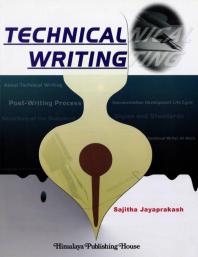 The IEEE Guide to Writing in the Engineering and Technical Fields by David Kmiec; Bernadette Longo; Julia Williams
The IEEE Guide to Writing in the Engineering and Technical Fields by David Kmiec; Bernadette Longo; Julia WilliamsCall Number: T11 .K554 2017
ISBN: 9781119070139
Publication Date: 2017-09-25
Helps both engineers and students improve their writing skills by learning to analyze target audience, tone, and purpose in order to effectively write technical documents This book introduces students and practicing engineers to all the components of writing in the workplace. It teaches readers how considerations of audience and purpose govern the structure of their documents within particular work settings. The IEEE Guide to Writing in the Engineering and Technical Fields is broken up into two sections: "Writing in Engineering Organizations" and "What Can You Do With Writing?" The first section helps readers approach their writing in a logical and persuasive way as well as analyze their purpose for writing. The second section demonstrates how to distinguish rhetorical situations and the generic forms to inform, train, persuade, and collaborate. The emergence of the global workplace has brought with it an increasingly important role for effective technical communication. Engineers more often need to work in cross-functional teams with people in different disciplines, in different countries, and in different parts of the world. Engineers must know how to communicate in a rapidly evolving global environment, as both practitioners of global English and developers of technical documents. Effective communication is critical in these settings. The IEEE Guide to Writing in the Engineering and Technical Fields Addresses the increasing demand for technical writing courses geared toward engineers Allows readers to perfect their writing skills in order to present knowledge and ideas to clients, government, and general public Covers topics most important to the working engineer, and includes sample documents Includes a companion website that offers engineering documents based on real projects The IEEE Guide to Engineering Communication is a handbook developed specifically for engineers and engineering students. Using an argumentation framework, the handbook presents information about forms of engineering communication in a clear and accessible format. This book introduces both forms that are characteristic of the engineering workplace and principles of logic and rhetoric that underlie these forms. As a result, students and practicing engineers can improve their writing in any situation they encounter, because they can use these principles to analyze audience, purpose, tone, and form.

 Technical Writing by
Technical Writing by  Technical Writing by
Technical Writing by  Technical and Professional Writing Genres: A Study in Theory and Practice by
Technical and Professional Writing Genres: A Study in Theory and Practice by